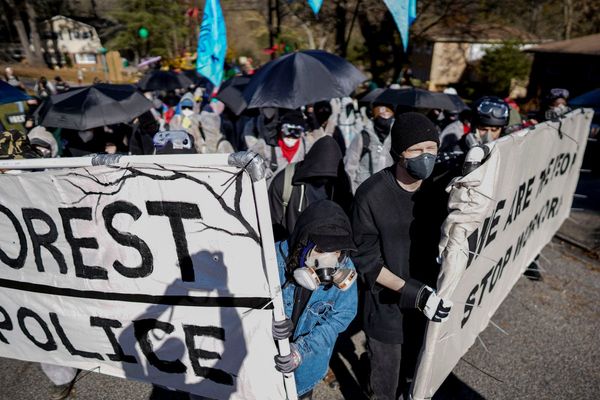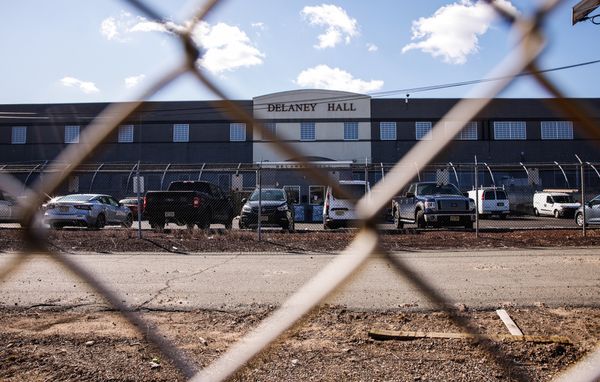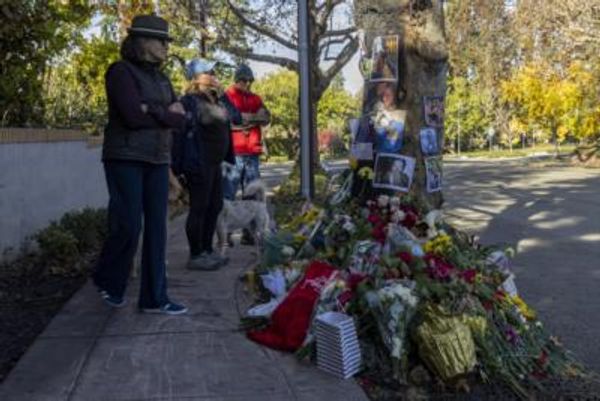
Bernard “Bernie” Lawrence Madoff — perhaps the most infamous investor of all time — was a disgraced American fund manager and one-time chair of the Nasdaq stock exchange.
He died on April 14, 2021, while serving a 150-year federal prison sentence for 11 counts of money laundering, securities fraud, and other felonies. His cause of death was chronic kidney failure.
What was Bernie Madoff’s early life like?
Madoff was born on April 29, 1938, to a Jewish-American family in the Laurelton neighborhood of Queens, New York. His father, Ralph, was a plumber and a stockbroker. It was later revealed that his mother Sylvia, who also traded securities, had been investigated by the Securities and Exchange Commission (SEC) in 1963 for improper record-keeping, although those proceedings were ultimately dismissed.
Bernie Madoff graduated from Far Rockaway High School in 1956 and married his high school sweetheart, Ruth Alpern, in 1959. Although Ruth worked alongside Madoff as his bookkeeper, she denied knowing about the fraud her husband committed before he confessed to his family in December 2008.
After a stint at the University of Alabama, Madoff graduated from Hofstra University in 1960. His first job was trading penny stocks with proceeds obtained from an earlier job as a lifeguard; later that year, he persuaded his in-laws and other smaller traders in his circle of family and friends to invest with him and launched his own investment advisory, Bernard L. Madoff Investment Securities LLC.

Hiroko Masuike/Getty Images
What did Madoff’s non-criminal career consist of?
Madoff’s eponymous firm dealt with retail investors and was considered too small to be a member of the New York Stock Exchange; in subsequent interviews, Madoff admitted to feelings of inferiority.
Equipped with a brilliant mind, Madoff was credited with laying the foundation for “commission-free” trading. Madoff’s firm was a market maker, which meant it was a wholesale buyer and seller of securities for its accounts. It profited from the difference in the “spread” between bid and ask prices.
Wall Street liked these types of dealers because they supplied the markets with liquidity in the form of a steady stream of orders. Brokerage firms liked this practice because they got compensated for sending their orders through market makers. Madoff was a big proponent of this trading practice, known as payment for order flow, although many considered it to be unethical.
Back in the 1960s and 1970s, most trading took place on the floors of stock exchanges; Madoff’s firm initially placed their over-the-counter trades via pink sheets. In order to compete with the larger brokerages, Madoff and his brother, Peter, designed a computer system that could electronically trade the stocks his firm bought and sold.
Related: Warren Buffett's net worth: How the Berkshire Hathaway founder made his billions
This was considered revolutionary at the time and the technology, called the National Association of Securities Dealers Automated Quotations, would quickly grow so renowned that it needed only be referred to by its acronym, Nasdaq.
Madoff himself believed his electronic trading system would make him more competitive with bigger brokerages because it had the ability to instantaneously highlight the lowest trading prices for his clients — which of course, belonged to his firm.
Thus, Madoff became a pioneer of the electronic trading system, and Madoff Investment Securities became one of the financial world’s largest market makers. At one point, his company was responsible for as much as 9% of the trading volume of the New York Stock Exchange.
Madoff himself served as the chairman of Nasdaq in 1990, 1991, and 1993. He also served as chair of the National Association of Securities Dealers, which, ironically, provided regulation over the securities industry.
How did Bernie Madoff’s Ponzi scheme work?
In addition to his brokerage, Bernie Madoff ran an asset management business at Madoff Investment Securities. It was located in Manhattan on the 17th floor of 885 Third Avenue, also called the Lipstick Building, as its sleek, glass exterior resembled a lipstick bullet.
At the height of his career, Madoff had nearly 24,000 clients, many of whom were charitable foundations and people of Jewish descent, including Elie Wiesel (the famed Holocaust survivor and author), Jeffrey Katzenberg, Walt Disney Studios’ CEO, and celebrities such as Steven Spielberg, Kevin Bacon, Kyra Sedgwick, and Larry King.
Madoff’s Ponzi scheme was purported to have started in the 1980s. He operated the scam by funneling the assets of his clients into a single bank account instead of the stock market. Madoff’s associates then created fake trading statements detailing made-up trading prices and bogus gains.
If an early investor wanted to “cash out,” Madoff would repay them with funds from newer investors instead of actual investment gains. In addition, Madoff set up a complex web of smaller funds, known as “feeder funds,” that were pooled together and also managed by Madoff Securities — sometimes without the investor’s knowledge.
Madoff was able to conceal this deception for so long because his firm was a securities broker-dealer and thus could book its own trades. And because of Madoff’s personal reputation as a key Wall Street player, as he told SEC Inspector General David Kotz from his jail cell in 2009, he believed the SEC didn’t look carefully enough for the telltale signs of deception.
More personalities:
- Céline Dion's net worth: How the retired megastar keeps making millions
- Steve Wozniak’s net worth: The Apple cofounder’s wealth in 2024
- What is Sundar Pichai's net worth?
Madoff received fees from his clients, which he used to pay his staff and family: his brother Peter was his senior managing director, his niece Shana was his rules and compliance officer, and his two sons, Mark and Andrew, managed the brokerage.
Madoff claimed to generate double-digit gains for his clients in both bull and bear markets, although even his own clients couldn’t explain his strategy. In a 1992 interview with The Wall Street Journal, Madoff said he had invested in large-cap stocks with convertible arbitrage positions in the 1970s, and in the 1980s, he took out futures contracts on the S&P 100 while also employing a complex hedging strategy during the 1987 stock market crash. Later, he would admit that he had fabricated all of these returns.
Allegedly, his assets under management amounted to $6 billion by the 1990s, which at the time would have made Madoff Investment Securities the largest wealth management firm in the world.
But Madoff couldn’t fool everyone forever.

Bureau of Prisons/Getty Images
How was Bernie Madoff caught?
As early as 1999, a forensic accountant and fraud investigator named Harry Markopolos was on Madoff’s trail. In fact, as he detailed in his book, No One Would Listen: A Financial Thriller, Markopolos was working at Rampart Investment Management, an options trading company, when he was tasked with mimicking Madoff’s returns for one of their firm’s trading partners.
Hours into the assignment, not only was Markopolos stumped — he was suspicious. It was simply impossible to replicate those returns using the strategies Madoff claimed. Markopolos soon contacted the SEC, although they failed to take action. Markopolos also sent his findings to The Wall Street Journal, but they also passed on the story.
In its own report covering the scandal, the SEC said it had attempted to investigate Madoff eight times throughout the 1990s and 2000s. However, internal mismanagement and conflicts of interest had thwarted efforts. One SEC compliance officer, Eric Swanson had even fallen in love with Shana Madoff, and when they got married, one of Swanson’s bosses remarked, “I guess we won't be investigating Madoff anytime soon.”
It took Madoff’s own children turning him over to authorities for his scheme to finally come to a halt. The global Financial Crisis of 2007–2008, which caused leveraged hedge funds like Bear Stearns to collapse, sent his panicked asset management clients to seek $105 million in redemptions.
At the time, Madoff only had $13 million in that account, so he tapped into his brokerage account, taking out $342 million, which left his business on the brink of insolvency.
Out of desperation, Madoff accepted leveraged funds and attempted to raise more money by inventing a new investment vehicle, but ultimately, these moves would not be enough.
On the evening of December 9, 2008, Madoff confessed to his sons that his business was a Ponzi scheme. The next day, they reported him to the FBI, who arrested him on December 11 on charges of securities fraud.
View the original article to see embedded media.
How much did Bernie Madoff steal? How much has been reclaimed?
It’s difficult to gauge the size of Madoff’s scam since most of his gains were fabricated. However, the assets the firm had claimed on paper were purported to be worth as much as $68 billion. Madoff’s actual principal was closer to $20 billion, while the Securities Investor Protection Corporation (SIPC) estimated losses to be around $17 billion.
The Madoff Recovery Initiative, which was created by the SIPC, states that as of July 2024, $14.6 billion has since been recovered and $4.221 billion paid to Madoff’s victims.
What happened to the rest of Madoff’s family?
Madoff’s scandal ended tragically for his family. On December 11, 2010, the second anniversary of Madoff’s arrest, his eldest son, Mark, was found dead, with the cause revealed to be suicide by hanging. Madoff later said he was tormented by his son’s death and had trouble sleeping in prison as a result.
Ruth, Madoff's wife, was never charged in connection to her husband’s Ponzi scheme, even though she had withdrawn $10 million the day before his arrest. She retained only $2.5 million of her $80 million worth of assets after Madoff was sentenced, although she later faced civil suits and was forced to pay another $594,000.
In June 2012, Madoff’s brother Peter was sentenced to 10 years in prison for his involvement with the fraud.
Madoff's other son, Andrew, died on September 3, 2014, from lymphoma.
A new book about Bernie Madoff
In July, 2024, a book about Madoff by investigative journalist Richard Behar was published by Avid Reader Press and Simon & Schuster. In Madoff: The Final Word, Behar recounts Madoff's dramatic life and precipitous fall from grace through interviews with prosecutors, FBI agents, members of Madoff's family, ex-employees and, most notably, a series of phone calls he recorded with Madoff while he was in federal prison.
Notable Bernie Madoff quotes
“In today’s regulatory environment, it’s virtually impossible to violate rules ... but it’s impossible for a violation to go undetected, certainly not for a considerable period of time.”
—Madoff speaking on a panel called “The Future of the Stock Market” in New York (Oct 20, 2007)
"I'm not saying I'm not guilty."
—Bernie Madoff in an interview with SEC Inspector General H. David Kotz and Deputy Inspector General Noelle Frangipan (June 17, 2009)
"I have left a legacy of shame, as some of my victims have pointed out, to my family and my grandchildren. This is something I will live in for the rest of my life. I'm sorry ... I know that doesn't help you."
—Bernie Madoff’s apology at his sentencing (June 29, 2009)
Related: Veteran fund manager picks favorite stocks for 2024







